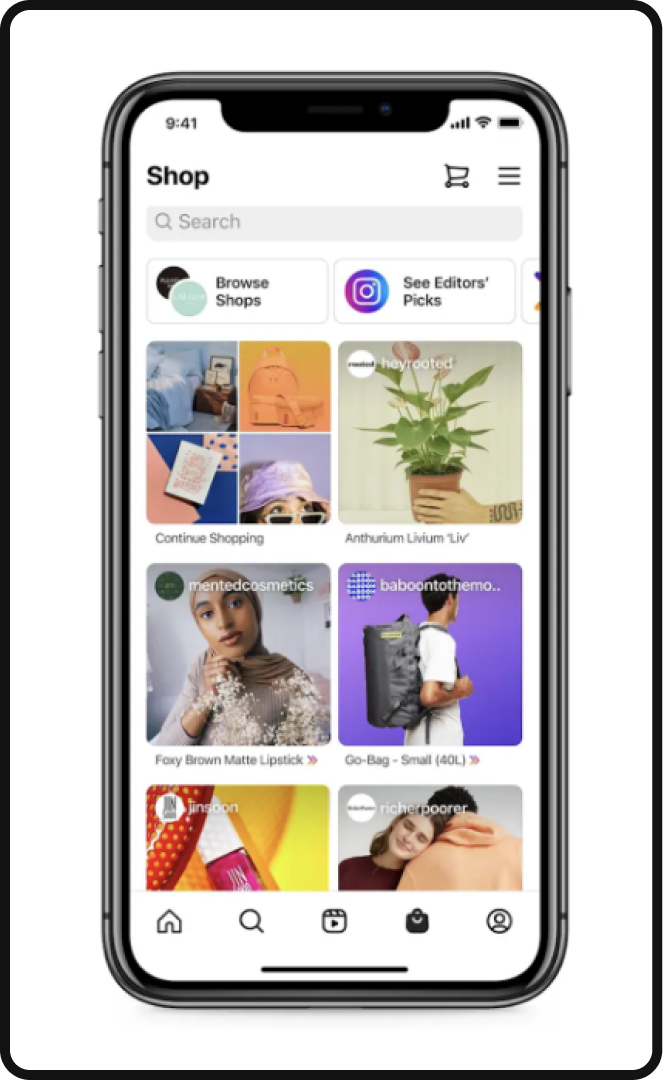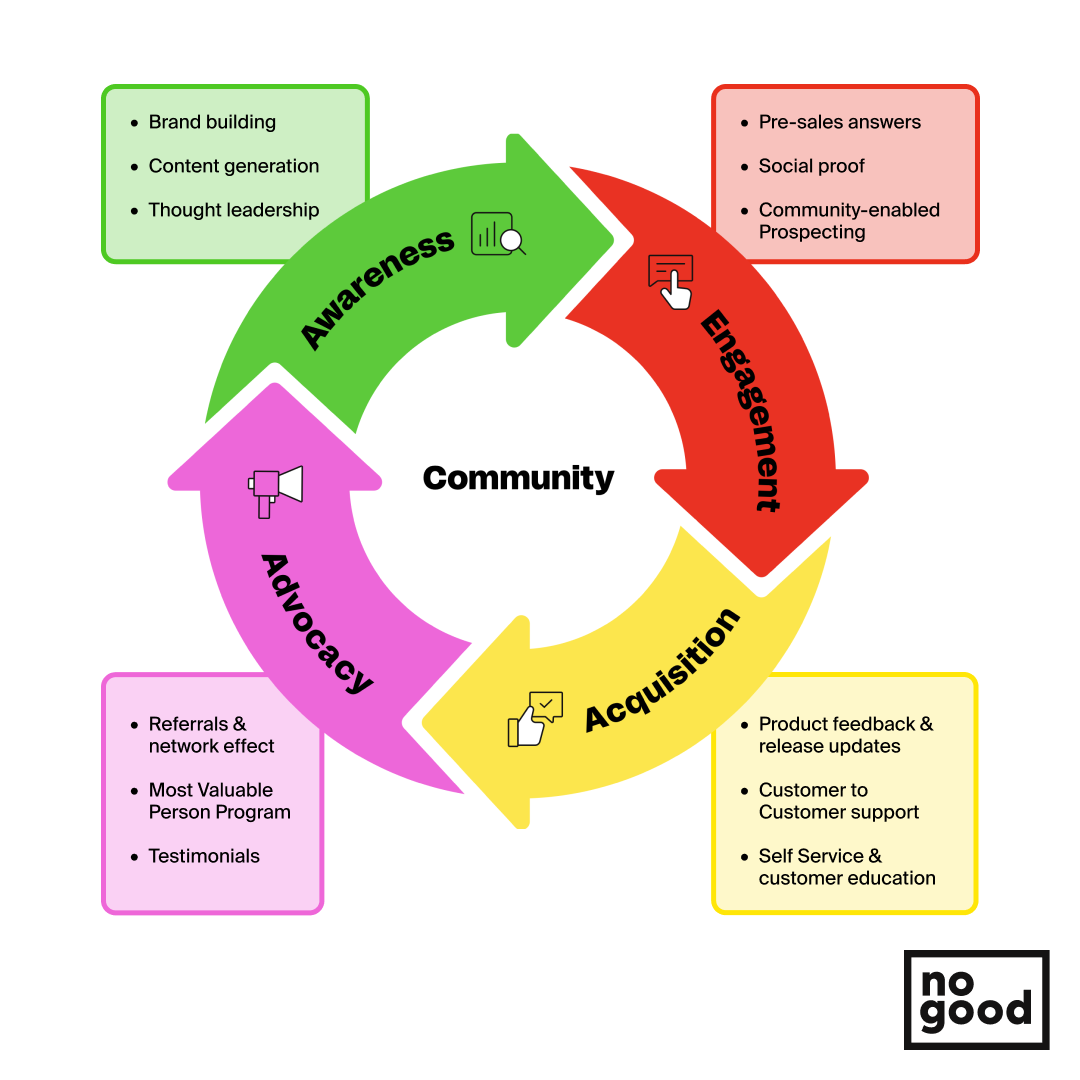What is Social Commerce?
Social Commerce is the integration of shoppable experiences that has been creeping into social media over the past few years — straying away from the traditional selling model. In doing so there becomes a wide adoption of community development for ultimate success. Exposure, information, and influence are now falling in the realms of social channels.
Strong brand building has never been so vital than with this shopping format —social commerce encompasses the technological embrace of the 21st century, with reliance on social platforms and e-commerce to harness community, accessibility, and consumer connection. Brands are moving from transactional to meaningful relationships with their consumers. And the key to this? Building community. Brands are doing so on social media platforms and all the current shopping tools that go along with them. Authenticity is the main driver of a successful community-building strategy, and because of the power authenticity holds on a brand’s community-building, social platforms are becoming bigger and bigger drivers of many brands’ overall revenue.
Driving emotional connection with consumers through a strong digital presence is key, with user-generated content, growth loops, community-led growth, and more. This shift has given brands the ultimate accessibility to their perception, image, and data.
Let’s explore why more and more brands are turning to social media platforms as key commerce channels.
The Role Social Channels Play Today for Brands
The average user is no longer looking to Google for product discovery and general brand searches. Driven by younger generations, the preferred search engine is shifting – away from Google and to social sites. Hootsuite’s Social Trends Report for 2022 states that 53.2% of global internet users between 18 and 24 turn to social networks to research brands. What does this mean for brands? Extremely high reach and exposure potential.
Social channels are also shifting the way photo and video assets are being created and presented by brands. Take the rise of short-form videos for example. It’s not just TikTok, short-form videos have taken social platforms by storm with Instagram Reels and Youtube Shorts. The popularity of these videos has allowed brands more freedom when it comes to storytelling and an overall better showcase of their brand in unique ways. Short-form videos can come in many forms for brands – comedic, educational, aesthetic, or a combination of all three, but it all ties back to being authentic as a brand and building up a community. Videos give a better opportunity for connection and relatability, and it’s important for brands to tap into that. Not to mention, short-form videos have the highest ROI of any other social media strategy.
Driving the popularity of short-form video and exemplifying authenticity are creators. 50 million people around the world consider themselves a creator, which means that there are ample opportunities for brands to partner with creators directly aligned with their values, mission, and overall target consumer. User-generated content is king in social media growth strategy right now. Users and consumers value authenticity and want to feel understood, and if a brand can harness that through UGC and partnering with the right creators, they will see higher revenues and a stronger community. The creator economy is booming, and this is all thanks to the constantly emerging new tools and platforms that allow creators to both monetize and promote brands in a more streamlined way.
At the Heart of Social Commerce: Authenticity and Connection
Without the benefits that social media channels offer, social commerce wouldn’t be what it is today, or wouldn’t even be at all. Brands are able to leverage an infinite number of tools and platforms to not only promote community and awareness among consumers but directly sell to consumers. An online shopping experience, often referred to as an e-commerce model, or digital storefront, was the first stepping stone in this new shopping structure, and from there the potential grew exponentially with the rise of social commerce.
Social commerce combines the efficiency of e-commerce with the widespread use of social media platforms to create a community-driven and convenient shopping experience for users. The key is combining the newfound appreciation for authenticity and transparency across social channels online with the updated shopping tools on platforms like Instagram, TikTok, and Facebook. 74% of consumers look to social networks to guide their buying decisions, and as a brand, being able to leverage the low barriers to entry exposure to social commerce and a social media presence provides, will give way to a more personalized experience for the end consumer as well as overall greater control as a brand.
TikTok: the #TikTokmademebuyit Phenomenon
TikTok recently jumped on the social commerce bandwagon with the launch of TikTok shopping, describing this new feature as a “suite of solutions, features, and tools that give businesses the opportunity to tap into the power of commerce on TikTok”. These social platforms are leveraging the shift they have seen involving an emphasis on community and authenticity between brands and their consumers to sell a product or service. Brands now have the ability to add a shop tab directly on their TikTok profile, allowing customers to browse all products without ever leaving the platform- this gives TikTok the ability to keep consumers on the app throughout the majority of the steps of their buying journey.

They have also rolled out a Product Tag feature allowing users and creators to link products in an organic post. This feature embodies everything that social commerce is moving towards- combining the authenticity of organic UGC with the ability to purchase through these organic-feeling assets right on the app.
Let it be known – TikTok is the platform that truly accelerated social commerce and set the standard for other social platforms. TikTok understands and is harnessing the power of the creator. Not only do creators fuel the platform, but they are redefining what social proof means for brands to gain consumer trust. The social commerce tools TikTok has released have been built around this, such as live shopping and their integration with Shopify.
Partnering with Shopify was the driving force behind much of TikTok’s social commerce success as well as the release of their shopping tools, such as the ability to tag products in organic TikToks. Upon the partnership with Shopify in the rise of social commerce domination, Kylie Jenner said that “I built my business on social media; it’s where my fans go first to look for what’s new from Kylie Cosmetics… I have so much fun creating TikTok videos, and I love sharing posts of my fans using the products. That’s why I’m excited for Kylie Cosmetics to be one of the first to let customers shop directly on our TikTok!” Kylie Jenner, although already having a massive reach, continues to build her brand through community and the utmost exposure on social media, so she understands the importance social commerce tools provide with social proof and creator relationships.
Facebook is embracing the rise in live streams to promote products by launching “Live Shopping Fridays” which allows brands to host live shows directly on the Facebook platform. They are able to answer questions about new product launches, promote an upcoming event, or simply tell consumers what to buy. Live Streaming seems to be the latest and greatest when it comes to cultivating connections with consumers. Customers want to feel as though they are chatting with a friend via Facetime, they crave that personal connection that is seen with top-performing content on all social platforms right now. The more in-the-moment, spontaneous, and authentic the content, the more relatability and in turn, the more influence UGC has on purchase decisions. Livestreams really buy into this idea and trend. Brands in the beauty and fashion space benefit from live streams especially due to their visual nature. How does this lipstick look on? How smooth is its real-time application? What is the fit of this blouse? How does it look on someone who is built like me? These are all questions that can be answered and demonstrated in real-time on a live stream.

According to Instagram’s data, 90% of its users follow at least one business. In addition, in a Facebook-commissioned survey of 21,000 people, it was revealed that two in three users on Instagram said the app allows interaction with brands. Instagram understand the power they hold in the social commerce space and leverages that accordingly. In 2020, Instagram rolled out “Instagram Shop”, which now serves as a seamless, in-app shopping discovery tool for users, and an integrated advertising platform for brands. This feature, as many other social commerce platforms also have, promotes the idea of discovery and finding a product or service you didn’t know you wanted or needed.
Going one step further, Instagram recently launched its “Checkout” feature, allowing users to directly purchase on-app rather than being directed to a separate page or brand website. Instagram says that “With checkout on Instagram, businesses can truly leverage the full ecosystem of Instagram Shopping features to build experiences that drive awareness and transactions all in one place.” Shopping has become such a prominent feature on the app, yet in such an integrated way. Over are the days of just settings and activity viewing on your personal page. You can now access your shopping “cart” and view your “purchases” directly on your Instagram profile. For brands, this means that there is less and less effort and distraction getting in the way of the ultimate purchase. This can be especially favorable for an emerging brand without a built-out e-commerce page or looking to fast-track a new consumer’s purchase decision and journey.

Cutting through the static of these densely saturated platforms is a tricky game to play but enlisting the help of carefully selected creators and influencers who align with your brand image and values is the first step in successful social commerce and overall e-commerce strategy. The key to successful social commerce strategies relies on a brand to demonstrate authenticity, community, and a solution to a previous need in the market. Social commerce opportunities are set to almost triple by 2025. According to Accenture, social commerce opportunities will reach $1.2 trillion by 2025. Yes, I said trillion.
Younger generations are single-handedly shaping the future of social commerce. Instead of cornering the pages of magazines to mark something they may want to buy or watching QVC, they’re tapping through Instagram stories and responding to phrases like “swipe up to shop” or “click the link in my bio to see more”. In fact, 40% of both Gen Z and millennials have bought something while watching a live stream on a social media platform.
Social commerce is a revolutionary way to sell, especially for small businesses, that can reach mass audiences from the comfort of their own home. Research found that 59% of social buyers are more likely to make a purchase from a small business when shopping on a social platform versus online. There is so much freedom of expression and direction when marketing to an audience on social platforms. By curating the appropriate brand image, and discovering the right creators, and influencers to align with that image, in addition to harvesting community, there is a recipe for success in social commerce. Sandie Hawkins, a general manager at TikTok described the influence of social commerce by saying, “it’s word of mouth on steroids”.
User Generated Content & Cultivating Community
It’s the word you’ve been hearing over and over in the world of brand growth strategy: community. With the current state of social media and social commerce, a sense of community is expected by consumers and required for brands. Community-led growth is also mutually beneficial in a variety of ways. On the brand side, you are creating a network of passionate consumers who will organically drive additional customer acquisition and overall growth. For the consumer, we all want to feel as though we are a part of something larger than ourselves and greatly valued in the process – if a brand achieves this then it is extending its overall value to the consumer beyond a product. In order for brands to cultivate said community, there needs to be a strategic approach to all social channels, especially through user-generated content.

Social commerce provides the perfect platform for selling in a more native, organic way but it’s the assets used that can make or break the way consumers perceive your brand and ultimately buy. Tapping into these commerce abilities of social channels will only prove successful in sales, engagement, and consumer retention if you can crack the code of organic feeling UGC. UGC takes authenticity to another level for brands and reaches the consumer in a more personable way compared to “traditional” ad campaigns- think a photoshopped, expertly curated Maybelline mascara billboard. Now, sticking with the Maybelline mascara example, what consumers expect today is not a hyper-curated glossy ad, it’s a candid review, a get ready with me, testimonials, and real-time tutorials. Being able to see candid reactions and results to a product or service is where user-generated content thrives, and social proof prospers.
Creators and Influencers: Fueling UGC
In the introduction stage, brands may find themselves struggling to begin to build their community-led growth strategy and overall exposure across social channels. In order to find success through social commerce selling, presence on social platforms needs to be strong and aligned with the overall brand image and values. This is where influencers and creators come in to propel growth and exposure. Not only will enlisting an influencer or creator contribute to the UGC and organic content consumers crave but collaborating with ones who directly align with your brand holds exponential value.
Remember when there was always a different celebrity on your cereal box growing up? Celebrity endorsements have been around a while now, and influencer and creator-generated content takes this premise and makes it entirely more relatable, organic, and raw. Consumers want to feel seen- they want to feel like it’s a friend giving them a recommendation as they scroll their socials, not some over-produced video of a model they don’t feel connected to. Building community by tapping into an already established one through these influencers and creators is necessary to grow on social and in turn create a successful, profitable social commerce platform.
Implementing a Growth Strategy Through Social Commerce and Community-Led Growth
Social Commerce Embraces the technological efficiency of the 21st century while maximizing exposure, as well as growth potential. Social commerce and e-commerce have driven the social validation approach with greater accessibility and fewer barriers to entry. In the era of community-led growth and the age of the creator, more and more small brands are making the strategic decisions to go solely social, at least in their introduction and growth stages.
Cutting out traditional discovery channels and leveraging the power of social media is what social commerce is all about, and can be wildly successful as a launching pad for small and emerging businesses. While social commerce eventually may threaten the future of traditional retail and brick and mortar, for now, this approach’s low barriers to entry ensure brand exposure and community building, before eventual graduation into the big retail leagues.
This approach’s low barriers to entry ensure brand exposure and community building, before eventual graduation into the big retail leagues. Social commerce gives freedoms brands have never had before- unlimited potential for exposure and community building while simultaneously selling on the same platform.






